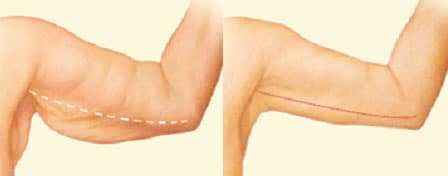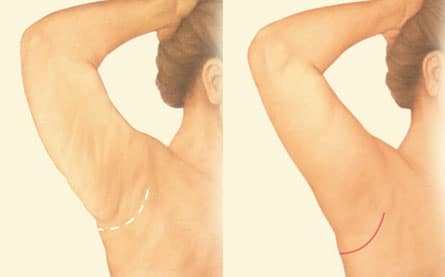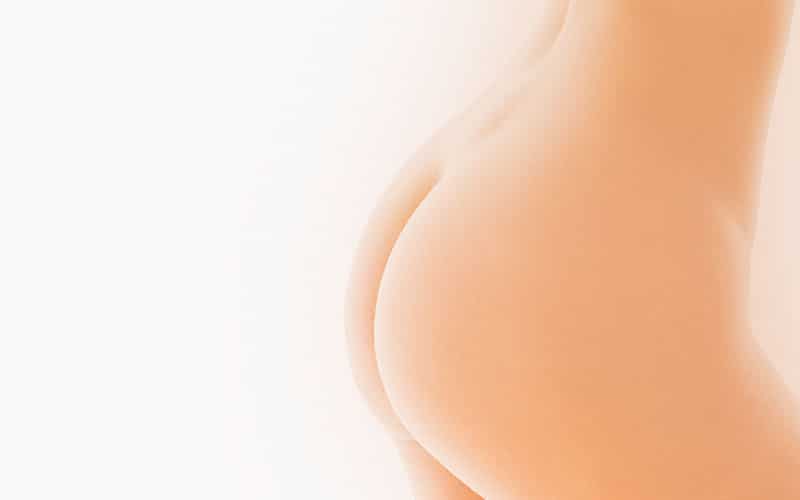brachioplasty
If you are searching for a method to tighten the skin of your upper arms as well as reduce their size, a brachioplasty, otherwise known as an arm lift is the most effective option, especially if the skin of your arms has lost its elasticity.
In most cases, the results are permanent especially if you follow a balanced diet and exercise regularly. In certain cases, Dr. Haworth also includes shoulder reshaping so that the arms look good not just from side or when raised but also from the front and back so that the widest part of the arms are at your shoulders and not halfway between down your arm 6 inches above your elbow!
Though a scar is involved with this technique, if you have realistic expectations, a brachioplasty may be just the answer for you.
Terminology notes
An arm lift is a significant surgical procedure but compared to an abdominoplasty (tummy tuck) postoperative discomfort is minor, complications few and postoperative convalescence dramatically shorter.

This operation removes “flabby” skin in a dramatic fashion while reducing the actual circumference of the arms. However, it does produce a permanent scar which, depending on the extent of the original problem and the surgery required to correct it, can extend from the elbow through and past the armpit.
If you are exploring options to make your arms not only smoother but svelte and in proportion to the rest of your body, then this page will give you a better understanding of your available options. Of course, it can’t answer all of your questions, since a lot depends on the individual patient and surgeon. Please ask your surgeon about anything you don’t understand.
The placement and length of the arm incision will depend on the location and amount of the patient’s perceived excess fat, their skin thickness as well as its elasticity and how it hangs. It goes without saying that each plastic surgeon may have a different approach to the same aesthetic problem but the general goal is the same-to remove excess soft tissue to create a natural, smooth and elegant upper arm which a patient will no longer want to hide in long sleeves.
The traditional brachioplasty results in a newly imperceptible scar running longitudinally on the inner aspect of the arm, the length of which depends on the extent of the original cosmetic problem.

A limited incision brachioplasty is exactly that, a shorter scar arm lift, designed to tighten the upper arm but located transversely across the apex of the axilla (armpit). However, Dr Haworth feels that these brachioplasties often times fall short of their stated goals and should therefore be used to only correct arms with minor sagging.
alternatives to surgery include lasers and radiofrequency devices such as Titan ®, Thermage ® and Ulthera ®. In Dr. Haworth’s experience, these devices overpromise and under deliver falling far short of their stated goals.
Candidates for Brachioplasty
The best candidate for an arm lift are those in relatively good shape but are bothered by excess loose, hanging and/or flabby skin that won’t respond to diet or exercise. The surgery is particularly helpful for people who have lost a significant amount of weight and have stretched their arm skin to the point where its elasticity has been irreversibly damaged to the point where it cannot return to normal.
Patients who intend to lose a significant amount of weight should postpone this type of surgery (this also goes for abdominoplasties, breast lifts or reductions and facelifts). Of course, loss of skin elasticity in older patients, which frequently occurs with slight obesity and or genetic predisposition, can also be improved with the surgery.
Of course, individual results can vary, but brachioplasty can enhance your appearance and self-confidence but it won’t necessarily change your looks to match your ideal or, indeed, cause certain people to treat you differently. Before you decide to have this type of surgery, you must think carefully about your expectations and discuss them with your surgeon.
Pre-operative consultation
in your initial consultation, your surgeon will evaluate your health, determine the distribution and extent of fat deposits in your arm region (including your shoulder and arm pits ) and carefully assess your skin tone. Your surgeon would want to know if you smoke, what type of medications you are taking including vitamins and any illicit drug use.
Be frank in discussing your expectations with your surgeon. Plastic surgeons should be equally frank with you, describing your alternatives and the risks and limitations of each. For example, your plastic surgeon may feel you will benefit from a more limited brachioplasty such as one that results in a scar simply traversing the span of your armpit. Others may recommend noninvasive work such as radiofrequency or laser treatments. In any case, your plastic surgeon should work with you to propose a treatment plan that will not only treat your aesthetic problem but also meet your expectation threshold.
During the consultation, your surgeon will discuss the type of anesthesia that will be administered, the type of facility where the surgery will be performed and the costs involved. Only in certain cases such as the consequences of massive weight loss do health insurance policies cover the cost of a brachioplasty. However, you should check your policy to be sure.
Operation and recovery logistics
Most surgeons perform arm lifts an outpatient surgical center or office-based facility. Some surgeons utilize a hospital, where the patient can stay for a few days. In today’s day and age, this is unnecessary both in terms of cost, time and safety.
You will be given specific instructions on how to prepare for surgery, including guidelines on oral intake, smoking and avoiding certain vitamins, medications and food types.
If you’re a smoker, you need to stop smoking at least two weeks before and not resume until two weeks after your surgery. You need to avoid overexposure to the sun both before surgery and in the postoperative period. Do not go on a stringent diet as this can affect your healing ability. In the unfortunate circumstance you may develop a cold or infection of any kind, your surgery may be postponed.
Whether your surgery is done as an outpatient or inpatient, you will need to arrange for someone to drive you home after surgery. However, brachioplasty does not involve specialized nursing care after the procedure unlike that required for an abdominoplasty, facelift, etc.
Post-operative care
Depending on the extent of surgery, your arms will display varying amounts of swelling and tightness for one to two weeks and you’re likely to feel some mild discomfort which can be controlled by medication. Your arms will most likely be bruised to some degree and display localized asymmetries and subtle irregularities for the first 2 to 4 weeks after the surgery. However, your arms will be placed in a somewhat snug compression sleeve that you will be required to wear for 2 to 4 weeks after the surgery.
Your doctor will give you instructions on cleaning the area and changing your dressings. You will be asked to refrain from certain exercises including, obviously, lifting weights with your arms. Some doctors employ stitches that must be removed whereas Dr. Haworth employs fully absorbable stitches below the skin which do not require removal. Dr. Haworth utilizes specialized surgical tape to provide external support for the fresh incision which results in minimal scarring. He likes to keep this on for three months after the surgery. However, approximately 3 to 5% of patients develop an allergy to the adhesive of the tape. This necessitates an alternative approach which Dr. Haworth will discuss during your clinic visits, should that minor problems arise.
It may take you weeks or months to feel like your old self again-as if nothing had happened to your arms. Most patients return to work after 10 to 14 days while others may take longer before they feel up to it. In general though, brachioplasty is a procedure resulting in only minor discomfort and time off work.
Your scars may actually appear to worsen during the first 3 to 4 months as they heal but this is normal. Expect 6 to 9 months before your scars flattened out and lighten in color. While no scars in any part of the body disappear completely, arm lift scars are discreetly hidden, are not visible under most clothing and tend to develop into a fine line.
Risks and challenges
Thousands of brachioplasties are performed with excellent results each year. When performed by a board-certified, respected plastic surgeon who is trained in body contouring, the results of this surgery are generally very positive. Nonetheless, there are risks associated with all types of plastic surgery including this one.
These generally fall into two groups: infection and poor healing.
Infections are treated with antibiotics and drainage is necessary.
Poor healing, which results in conspicuous scars may necessitate further treatments such as steroid injections, lasers and possibly a minor secondary operation such as a scar revision. Smokers should be advised to stop smoking since tobacco use may increase the risks of complications and possible dehiscence (separation of the wound in the postoperative period).
You can reduce complication risk by closely following your surgeon’s instructions before and after the surgery and should you have any questions, never hesitate to ask the office staff.



